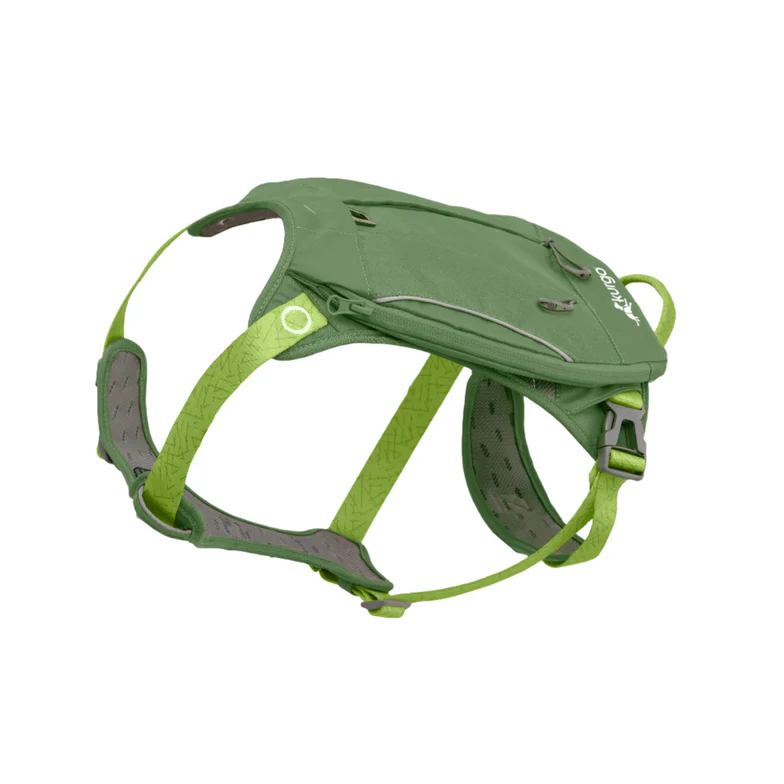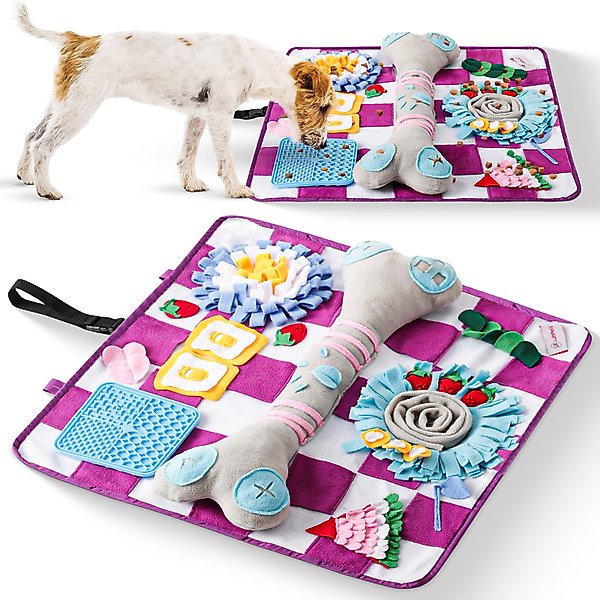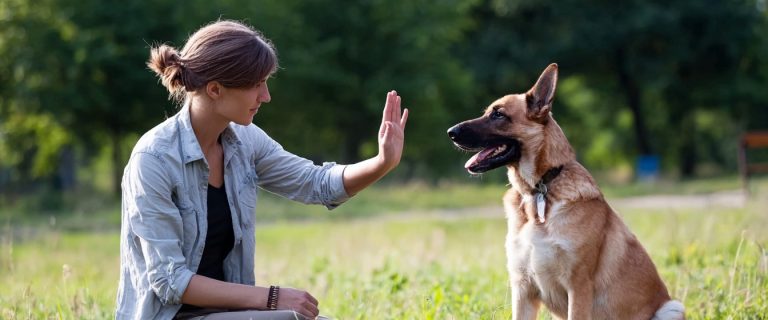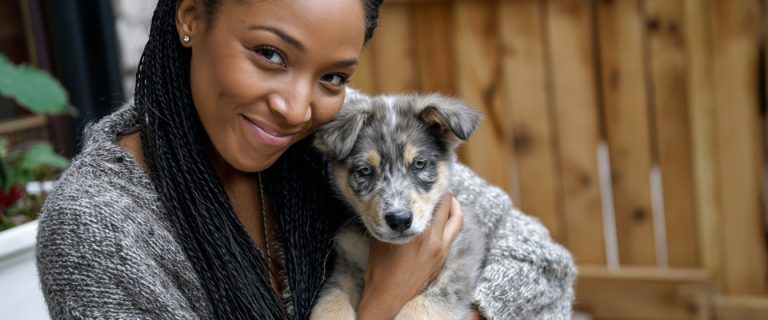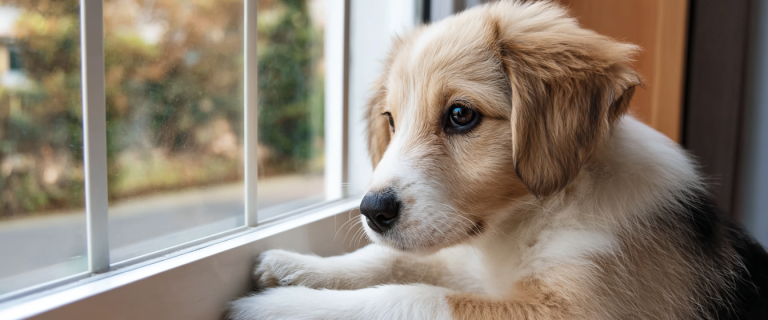Learning how to train a rescue dog—especially one that’s been abused—is a unique and emotional journey. You’re not just teaching them commands like sit or stay; you’re helping them unlearn fear and relearn trust. It takes time, patience, and a whole lot of heart.
If you’re feeling overwhelmed, don’t worry. You’re not alone—and your dog isn’t beyond help. With patience, consistency, and lots of love (plus a few science-backed strategies), your rescue pup can go from fearful to flourishing.
Here’s everything you need to know to train a rescue dog that’s experienced abuse—compassionately and effectively.
FYI, this post includes affiliate links where we recommended products. If you buy anything through those links we earn a commission.
1. Learn What You Can About Their Past
Knowing a dog’s backstory can make a huge difference. While shelters or rescue groups may not always have the full picture, any information helps:
- Were they physically abused? Neglected?
- Do they react fearfully to certain people, sounds, or situations?
- Are there visible signs of trauma (flinching, hiding, cowering)?
Understanding their trauma helps you anticipate triggers and tailor your training accordingly. But even if you’re working with a blank slate, the following steps can still help rebuild trust.
2. Create a Safe Space
Before any training can begin, your dog needs to feel safe. Set up a quiet, cozy spot where they can relax without being bothered. A crate with the door open, a bed in a low-traffic room, or even a corner with a soft blanket will do the trick.
Stick to a consistent routine for meals, potty breaks, and quiet time. Predictability is key—it helps abused dogs feel more in control of their environment.
Tip: Consider using a pheromone diffuser or soft classical music to help reduce anxiety.
Powered by ADAPTIL, the #1 vet-recommended calming pheromone, ThunderEase helps ease anxiety from separation, storms, and more—no drugs, just comfort. Safe for all pets and people, the diffuser mimics a mother dog’s natural calming scent and provides up to 30 days of continuous relief.
3. Speak Their Language
When it comes to communication, body language and tone matter more than the words you use:
- Use calm, low tones—no shouting or high-pitched excitement.
- Avoid fast or sudden movements.
- Let them come to you—don’t force interaction.
Remember, you may be the first person in a long time (or ever) who treats them with kindness. Every interaction is part of your training.
4. Start with Trust-Building Exercises
Before you dive into obedience training, focus on earning your dog’s trust. Reward any positive interaction:
- Eye contact
- Approaching you voluntarily
- Taking food from your hand
These tiny moments are victories. Celebrate them!
5. Use Positive Reinforcement Only
Abused dogs do not respond well to punishment-based training. Positive reinforcement—treats, praise, gentle touch—is your best friend here.
When your dog does something right, mark it immediately with a reward. A clicker can help create a consistent signal.
6. Practice Desensitization & Counter-Conditioning
If your dog has specific triggers (loud voices, men in hats, the vacuum cleaner), you can help rewire their response using this two-step approach:
- Desensitization: Gradually expose them to the trigger at a very low intensity.
- Counter-conditioning: Pair that exposure with something positive (like chicken or peanut butter).
Over time, that trigger starts to feel less scary and more like a cue for good things.
7. Check for Physical Pain or Health Issues
Sometimes what looks like “bad behavior” is actually a pain response. Before beginning any serious training plan, take your dog to a vet for a full check-up.
Also consider working with a certified fear-free dog trainer or veterinary behaviorist—especially if aggression or extreme fear responses are part of the picture.
8. Use the Right Tools
Training tools should make your dog feel more secure, not less. We recommend:
- A well-fitted harness (we like this one by Kurgo also pictured below) or martingale collar (no choke chains or prong collars)
- A long leash for training walks
- Treat pouch with high-value training treats for quick rewarding
Be gentle and go slow when introducing new equipment.
Why carry it all yourself? The Cascade Harness lets your pup pitch in with three built-in pockets (including one for poop bags!). Made with tough ripstop fabric and breathable foam, it offers padded comfort, dual leash clips, and four adjustment points for a custom fit. Perfect for hikes, runs, and everyday walks.
9. Focus on Mental Enrichment
Confidence-building isn’t just about teaching commands. It’s also about giving your dog ways to engage their brain:
- Slow, sniffy walks
- New (non-scary) environments to explore
- Puzzle toys or snuffle mats (like the one below by LuftPets)
Keep your pet entertained, calm, and mentally stimulated with this colorful veggie-themed snuffle mat. Great for slow feeding and reducing anxiety, it encourages natural foraging and play. Lightweight, washable, and anti-slip—perfect for small pets at home or on the go.
Mental stimulation builds confidence—and a confident dog is easier to train.
10. Build a Daily Training Routine (Start Small!)
Short, consistent training sessions work best:
- Aim for 2–3 minutes at a time, 3–5 times per day.
- Start with simple commands like “sit,” “watch me,” or “touch.”
- Always end on a positive note.
Training should feel like a game, not a test.
Bonus: Sample 8-Week Training Plan
| Week | Focus |
|---|---|
| 1 | Build trust and establish a safe routine |
| 2 | Encourage gentle eye contact & touch |
| 3 | Introduce calm basic commands |
| 4 | Begin desensitization to triggers |
| 5 | Start short leash walks in quiet areas |
| 6 | Practice enrichment activities |
| 7 | Expand socialization slowly |
| 8 | Celebrate progress and adjust as needed |
This timeline is flexible—your dog sets the pace.
What If Progress Stalls?
It probably will—and that’s normal. Healing isn’t linear. If your dog regresses:
- Go back a step and revisit what worked before.
- Focus on safety and predictability.
- Don’t take it personally.
Consistency is more important than speed.
Final Thoughts: Patience Is Everything
Training an abused rescue dog is equal parts challenging and beautiful. You’re not just teaching manners—you’re helping a soul heal. Every tail wag, every moment of eye contact, every small step forward is a massive win.
Give it time. Let your dog learn to trust you on their own terms. And remember: love, patience, and positive reinforcement go a long, long way.
Got a success story or a question about training your own rescue dog? Share it in the comments—we’re all in this together.
Author
-

Hi there! I'm Nicole, the editor-in-chief and one of the writers here at DogVills. I've been a dog owner for most of my adult life and a dog lover for much longer than that. I grew up with a wonderful German Shepherd named Jake, who I loved SO much that I named my son after him. When I'm not writing for DogVills or my own site, Pretty Opinionated, I love spending time with my teenager (when he actually lets me) and my Pharaoh Hound, Freya. I'm also an avid reader AND a total TV fanatic.
View all posts


